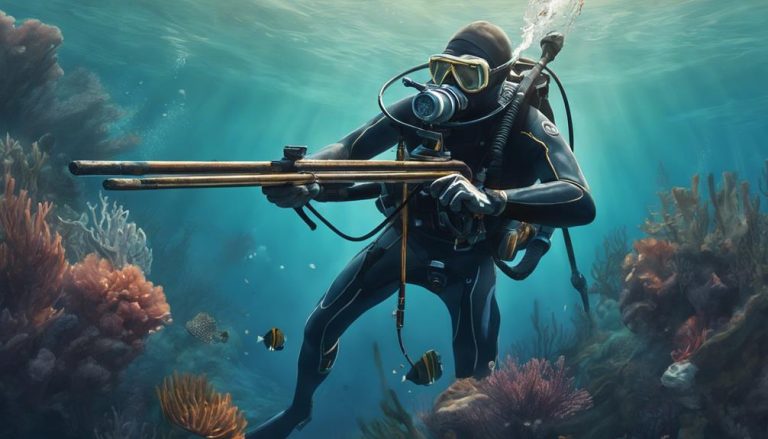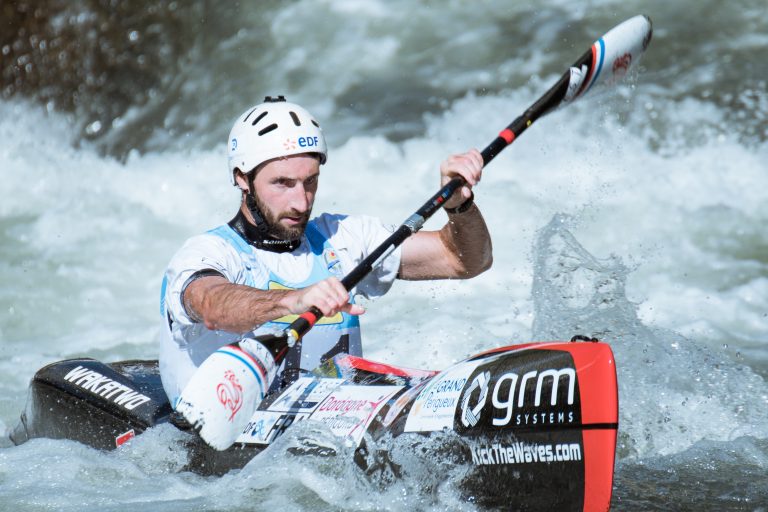General Rules of Inner Tube Water Polo
So, you're curious about inner tube water polo? It's a blast! Make sure the pool is deep enough and safe. Grab your teammates – 6 per side, each with a role. You'll need inner tubes, a ball, swimwear, goggles, and caps. Games have four quarters of 5-7 minutes each. Handle the ball well, communicate, and work as a team. Score by getting the whole ball over the goal line. Fouls happen, with consequences. For full rules and tips, keep the water polo excitement flowing!
Pool Size and Dimensions
When setting up for a game of inner tube water polo, you'll find that understanding the pool size and dimensions is important for a smooth and enjoyable experience. Safety precautions should always be a priority. Before starting the game, confirm the pool is deep enough to prevent any injuries. A pool that is at least four feet deep is recommended to avoid any potential accidents. Additionally, make sure the pool area is free of any sharp objects that could puncture the inner tubes.
Pool maintenance is another vital aspect to ponder. Before starting the game, check the pool for any leaks or damages that could impact the gameplay. Ensure the water is clean and properly treated to provide a safe and hygienic environment for all players. Proper pool maintenance not only ensures a better gaming experience but also prolongs the life of your equipment.
Understanding the pool size and dimensions will also help you strategize better during the game. Knowing the distance between goals and the overall layout of the pool will allow you to plan your moves more effectively. Make sure the pool dimensions meet the standard requirements for inner tube water polo to fully enjoy the game without any restrictions or limitations.
Team Composition and Equipment
To ensure a successful game of inner tube water polo, understanding the team composition and having the right equipment are key factors for an enjoyable experience. Grasping the team strategy tactics, player roles, and the importance of team communication and sportsmanship etiquette will enhance your gameplay. Here is a breakdown of the typical team composition and essential equipment for inner tube water polo:
| Team Composition | Equipment |
|---|---|
| 6 players per team | Inner tubes |
| Goalkeeper | Water polo ball |
| Defenders | Swimwear |
| Midfielders | Goggles |
| Forwards | Caps |
In inner tube water polo, each player has an important role to play. Defenders guard the goal, midfielders move between defense and offense, and forwards focus on scoring. Effective team communication is crucial for coordinating plays and executing strategies. Remember, good sportsmanship is essential; respect your opponents and the rules of the game.
Equip yourself with the necessary gear, understand your role, communicate with your team, and embrace sportsmanship. By doing so, you'll be prepared to engage in the exciting world of inner tube water polo.
Game Duration and Timing
The game duration and timing in inner tube water polo adds an element of excitement and urgency, shaping the pace and intensity of each match. Effective time management is essential in this fast-paced game, where every second counts. A standard game usually consists of four quarters, each lasting around five to seven minutes, depending on the level of play and agreement among players. This short duration requires teams to swiftly implement their strategies, making quick decisions and constantly adapting to the dynamic nature of the game.
As the clock ticks away, the pressure mounts, pushing players to think on their feet and execute plays with precision. Time management becomes a strategic tool, influencing when to go on the offensive, when to focus on defense, and when to make critical substitutions. Teams must balance their gameplay to make the most of the limited time available, ensuring they maximize their scoring opportunities while preventing their opponents from doing the same.
In the fast-paced world of inner tube water polo, mastering time management is the key to successful strategy implementation. By efficiently utilizing the time allotted, teams can outmaneuver their rivals, secure important goals, and ultimately emerge victorious in this thrilling aquatic sport.
Ball Handling and Passing Rules
Amidst the lively splashes and strategic maneuvers of inner tube water polo, adept ball handling and precise passing are essential components that dictate the flow and outcome of each exhilarating match. When it comes to ball handling, mastering dribbling techniques is vital. The key is to control the ball while swiftly moving through the water, using your fingertips to guide it with finesse. Remember, the ball can easily slip away in the watery chaos, so honing your dribbling skills is a game-changer.
Passing strategies are equally important in inner tube water polo. Communication skills and teamwork dynamics play a significant role here. Quick, accurate passes can catch your opponents off guard and create scoring opportunities for your team. Establishing non-verbal cues with your teammates can enhance your passing efficiency, ensuring smooth changes and effective plays.
In the heat of the game, being able to read your teammates' movements and intentions can make all the difference. Work on your timing and spatial awareness to anticipate passes and execute plays flawlessly. Remember, in inner tube water polo, unity and coordination are paramount. By honing your ball handling and passing skills, you not only elevate your individual performance but also contribute to the collective success of your team.
Scoring and Fouls
In the dynamic game of inner tube water polo, scoring goals and understanding fouls are pivotal aspects that can sway the tide of the match in an instant. Let's explore the scoring rules first. To score a goal, the entire ball must cross the goal line within the goalposts and beneath the crossbar. Each goal typically awards one point to the scoring team. However, some variations of the game may have different scoring systems, so it's crucial to clarify this before the match begins.
Now, onto fouls and penalties. Fouls in inner tube water polo can result from various actions such as holding an opponent, pushing off their tube, or impeding their progress. When a foul is committed, the opposing team is usually awarded a free throw. In more severe cases, such as unsportsmanlike conduct or excessive roughness, the player may be ejected from the game, leading to a temporary disadvantage for their team.
Understanding the nuances of scoring and fouls is vital for success in inner tube water polo. By playing by the rules and staying attentive to avoid fouls, you can maximize your team's scoring opportunities while preventing the opposition from gaining an upper hand. So, stay sharp, play fair, and enjoy the liberating thrill of this exhilarating sport!
Frequently Asked Questions
How Does the Depth of the Pool Affect Gameplay in Inner Tube Water Polo?
In inner tube water polo, the pool size and water depth impact gameplay. A shallow pool can make it easier to maneuver, while a deeper pool may require more effort to reach the bottom for stability and movement.
Are There Any Specific Strategies or Tactics That Are Commonly Used in Inner Tube Water Polo?
When playing inner tube water polo, common strategies involve quick passes, teamwork, and positioning. Defensive positioning is key to intercepting passes and protecting your goal. Stay agile and communicate with your team for effective gameplay.
Can Players Switch Inner Tubes During a Game if They Get Tired or Need a Different Size?
You can't switch inner tubes during a game for comfort or size adjustments. Staying with your tube requires teamwork and adaptability. Player substitution is key for fresh energy. Embrace the challenge, make in-game adjustments, and boost team dynamics.
Are There Any Restrictions on How Players Can Move Around in the Pool While Playing Inner Tube Water Polo?
When playing inner tube water polo, you can move around the pool freely, like a playful otter exploring a river. Just remember to stay within the pool boundaries and handle your inner tube wisely for best offensive positioning.
How Does Weather or Outdoor Conditions Impact the Game of Inner Tube Water Polo, if at All?
When you play inner tube water polo outdoors, weather matters. Temperature affects comfort, rain can make things slippery, and wind alters ball movement. Teams adjust tactics for these conditions, making gameplay unpredictable yet exciting.
Conclusion
To wrap up, becoming proficient in the basic guidelines of inner tube water polo can result in an exhilarating and intense game in the pool. Keep in mind, consistent practice is essential, and collaboration is crucial in this high-speed sport. So, grab your inner tube, review the rules, and plunge into the action. As the saying goes, 'practice makes perfect,' and with commitment and expertise, you'll be creating ripples in no time.






